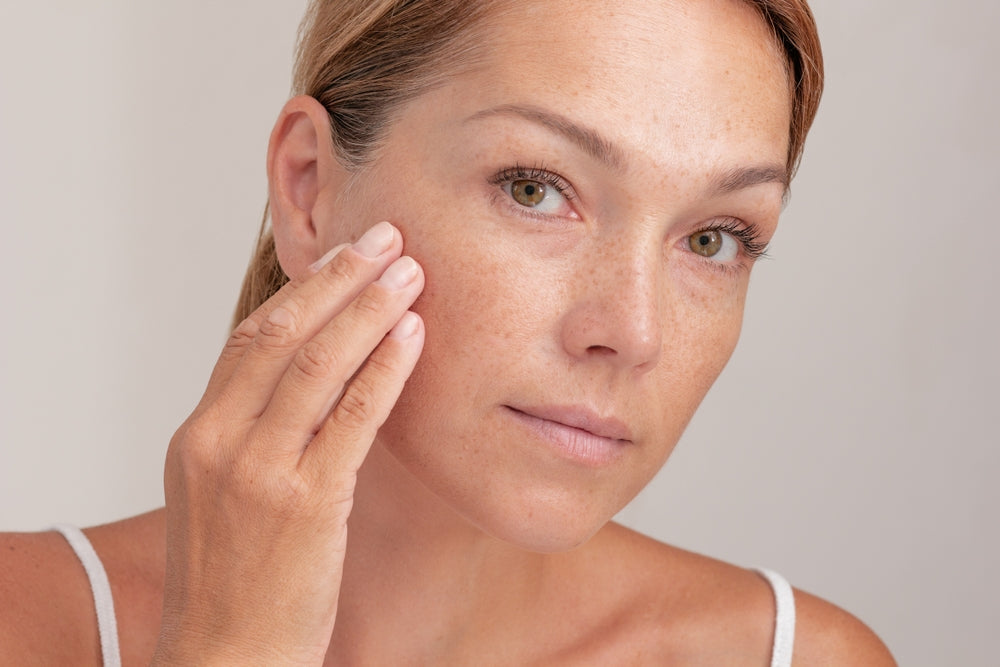When you have conflicting skin concerns or simply want the most from your daily skin care regimen, you look for products with specific ingredients that have proven benefits. Two highly popular and potent ingredients for reducing clogged pores and improving the appearance of the skin are salicylic acid and retinol.
However, as both chemicals are powerful ingredients, many people wonder if they’re safe to use in the same routine. Or, given their different benefits, whether they might cancel each other out or not work properly when used in tandem. We’ll fill you in on how to use salicylic acid and retinol for the best routine and best-looking skin.
What is Salicylic Acid Used For?
In skincare products, acids such as salicylic acid serve a few key purposes. First, it can help minimize bacteria that causes breakouts. Second, it helps cleanse the skin by exfoliating dead skin cells and dissolving excess oil trapped in the pores or on the surface of the skin. Finally, salicylic acid has anti-inflammatory properties, which can help reduce the appearance of redness or skin irritation.
The people who most often benefit from salicylic acid (a beta hydroxy acid), are those with acne-prone skin or oily skin types who need deeper cleansing properties from their skincare products. People with a sensitive skin type should use caution when using salicylic acid. Skin sensitivity may be a result of over-exfoliation, an impaired barrier, or genetics. Knowing what makes your skin sensitive and the degree of sensitivity can help you determine if salicylic acid is right for you. Different formulas may also have other active ingredients with salicylic acid that can cause irritation or other reactions when overused.
What is Retinol?
Retinol is perhaps best known for its anti-aging properties. There are actually several forms of retinol, which itself is a derivative of Vitamin A, that all have a similar reaction in the skin. When applied topically, retinol breaks down into retinoic acid. This compound binds to skin cells and signals a few different effects. First, it helps to exfoliate the skin's surface, helping resurface the skin more often, to improve skin tone and the overall look of the skin.
Next, retinol has been known to support your natural collagen production, which helps the skin appear more plump and youthful. With more collagen, you will see fewer and less noticeable wrinkles and uneven texture.
Retinol is popular but should be introduced slowly into your skincare routine. Some people might experience side effects like redness, peeling, or skin sensitivity, especially when first trying it out. You can avoid these by using fewer products, switching to a lower-potency formula, or decreasing the frequency of use.
How to Use Retinol and Salicylic Acid Together
If you’re lucky and can handle both salicylic acid and retinol on their own, you can try combining them during your skincare routine. Pay attention to how your skin looks and feels both immediately after changing your routine as well as the days that follow to make sure you don’t experience negative side effects.
When using both retinol and salicylic acid in your routine, most people recommend applying a leave-on salicylic acid treatment at a different time of the day than retinol. Separating active ingredients will be less likely to cause irritation However, you can use a product with salicylic acid that rinses off before applying retinol. Salicylic acid is an exfoliant that helps dissolve oil in pores and on the skin so the retinol product is more easily absorbed. We also recommend an oil-dissolving toner like the Clarify Exfoliating Astringent with salicylic acid to prep skin for other active ingredients like retinol. Allow any toner you use to fully dry before applying retinol for it to be most effective. Follow with a skin appropriate moisturizer to reduce the possibility of irritation.
Always end your routine with broad-spectrum sunscreen for the best protection, especially for sensitive skin or those who want to prevent the appearance of premature aging.
Epicuren Discovery’s Retinol and Salicylic Acid Products
At Epicuren Discovery, we’re always looking to enhance the lives of our customers with proven products and skin-concern-specific formulas. We use salicylic acid in popular products like our Clarify Cleanser, ideal for people looking for a solution to combat acne breakouts. You’ll find retinol in various strengths in our Epi Onyx line or specifically emphasized in our Retinol Anti-Wrinkle Complex. Let us know how your skin looks and feels when you take your regimen up a level. Discover even more professional-grade skincare products by taking our Skin Quiz today.
Frequently Asked Questions
Is retinol safe?
Incorporating retinoids into your skincare has benefits for many skincare concerns. Slowly introducing a retinol into your routine will help your skin adjust more easily. It can take up to 6 weeks for skin to adjust to retinol. Retinol and other retinoids are contraindicated for use during pregnancy. Always consult with a medical professional if you are unsure if an ingredient or product is right for you.
Do you need to wear sunscreen when using retinol and salicylic acid?
Yes, because acids and retinol can make the skin more sensitive to UV damage. It's important to wear sunscreen when you are using these types of products whenever you’re inside and outside.
Can you use salicylic acid in the morning and retinol at night?
Sure! Depending on your specific desires, salicylic acid might be better off to start your day, and retinol at night can give your sleeping skin some extra help in fighting the appearance of wrinkles.
How long after using salicylic acid can you use retinol?
You should wait for the salicylic acid solution to fully dry before moving on to other parts of your skincare routine.





